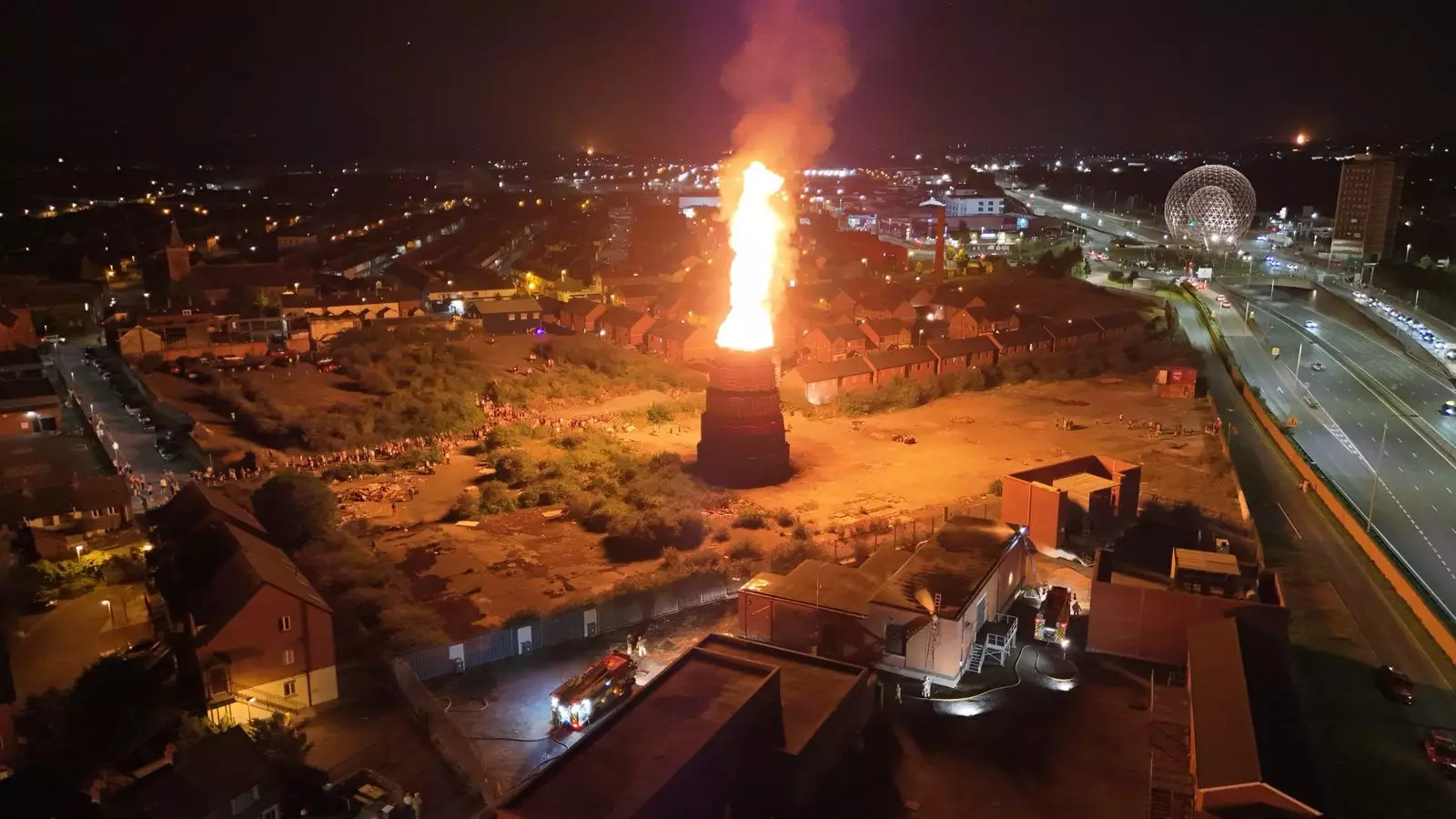Northern Ireland’s annual bonfire celebrations, long viewed as a symbol of cultural identity for some communities, are increasingly revealing the deep fissures within society. While these fire-lit rites might seem rooted in tradition, the recent incidents underscore a disturbing trend: the normalization of hazardous and divisive practices under the guise of cultural expression. The fact that dozens of bonfires—some built atop sites contaminated with asbestos—were ignited despite warnings and legal challenges exposes the community’s inability or unwillingness to confront the real issues behind these events.
This isn’t just about burning wood; it’s about the persistent stubbornness to recognize the broader implications of these acts. When a bonfire is erected atop asbestos-laden ground adjacent to hospitals and critical infrastructure, it becomes an environmental crime, risking public health and safety for what becomes a symbolic gesture. Such actions are emblematic of how history and tradition have been weaponized, allowing communities to overlook the consequences in favor of spectacle. This cultural stubbornness, cloaked in political symbolism, often prevents meaningful dialogue about shared safety concerns, environmental protection, or social cohesion.
Political and Social Divisions in the Spotlight
The controversy surrounding the asbestos bonfire, as well as protests involving provocative imagery—like effigies that threaten political figures and chants advocating violence—reflect the deep entrenchment of sectarian identity. The decision of some groups to go ahead with the bonfire, despite explicit warnings from authorities and environmental agencies, underscores a dangerous rejection of collaborative governance. It seems there exists within segments of Northern Ireland’s communities a deliberate refusal to acknowledge the broader societal costs for the sake of cultural affirmation.
This pattern reveals a troubling inability of civic institutions to foster an inclusive atmosphere. Instead of encouraging dialogue and understanding, certain factions choose confrontational displays that exacerbate tensions. The burning of a migrant effigy, for instance, is not just a provocative act but a stark indicator of societal disillusionment and xenophobia. Such incidents threaten to deepen divides rather than mend them, illustrating how old wounds are still susceptible to being reopened by symbolic acts that refuse to see beyond their own narrative.
The Security and Governance Void
The presence of over 4,000 police officers on parade night highlights the fragile peace maintained through overwhelming security measures rather than social solidarity. Heavy policing, while necessary, can also indicate a failure of community-led resolutions. Relying solely on law enforcement to prevent conflict and damage is shortsighted; it underscores a governance approach rooted more in control than in conflict resolution and social inclusion.
What’s more troubling is the apparent cultural resistance to change—a refusal rooted in tradition that often refuses to scrutinize itself critically. The recurring nature of these incidents, year after year, indicates a cycle of conflict escalation and community alienation. If the societal fabric is to be strengthened, there must be acknowledgment of the dangers these practices pose, both environmentally and socially. This involves critical self-assessment: understanding that cultural symbols should evolve or be reinterpreted to serve unifying rather than divisive purposes.
Moving Toward a More Inclusive Future
Real progress demands confronting uncomfortable truths about how identity and tradition are used to justify harmful acts. The focus should shift from defending antiquated customs at all costs to fostering a society where cultural expression does not come at the expense of safety or human rights. This requires political courage—challenging long-standing narratives and advocating for reforms that allow communities to celebrate their heritage responsibly.
The political leaders and civic organizations must balance respect for tradition with the imperative of environmental safety and social cohesion. Running parallel to this is the need for open dialogue that includes minority voices, dialogues that question whether current festivities—such as incendiary parades and symbolic acts—are compatible with a modern, inclusive society. Without this, society risks further entrenchment, leading to more incidents like asbestos-laden bonfires and inflammatory protests.
Ultimately, Northern Ireland stands at a critical crossroads. It must decide whether to cling to divisive symbols and dangerous customs or to embrace reform that prioritizes community safety, environmental health, and mutual respect. Only through honest self-criticism and courageous leadership can true reconciliation begin—transforming relics of division into symbols of a shared, progressive future.

Leave a Reply